History of formation
The Guangdong Assembly Hall was built in the late 19th century, when the Chinese community from Guangdong (China) migrated and settled in Vietnam. Initially, this place was just a small house used to worship the Holy Mother and organize community activities. After many renovations and expansions, the building has gradually become a spacious campus, demonstrating the economic and social status of the local community.
Following history, each step of construction is associated with the stage of commercial and cultural development: from expansion by contributions from Chinese members, to the participation of local Vietnamese in preservation and restoration. Thanks to that, the Assembly Hall is not only a place for religious activities but also marks the Vietnamese-Chinese cultural exchange through many generations.
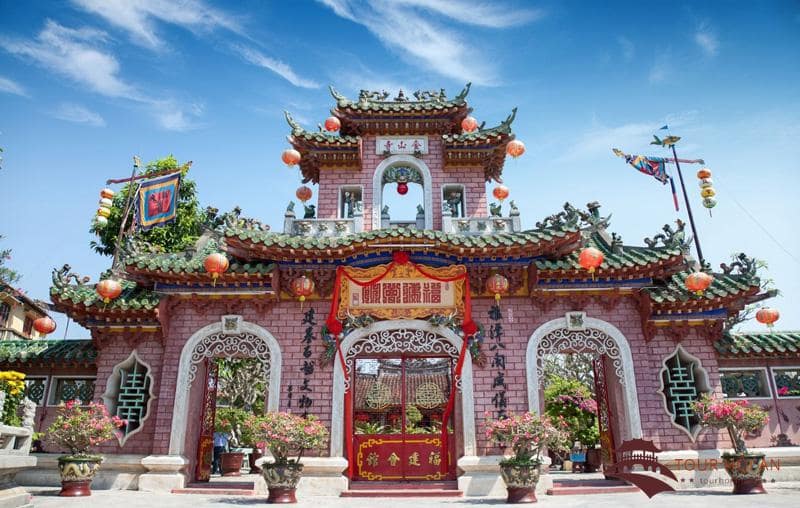
Architecture and fine arts
Before delving into the architectural details, let's take a look at the overall layout and main materials used at the Assembly Hall.
Layout – Materials – Construction direction
The Assembly Hall was built in the traditional “Tam” style: the main house in the middle houses the main hall – where the Holy Mother is worshipped; the two rows of houses on the East and West are used for meetings and storing artifacts. The main house faces the main road, open with a central courtyard used as a gathering place for locals and tourists.
The main materials are precious ironwood, green stone flooring and yin-yang tiled roof. The thick ironwood columns are elaborately carved, the moss-colored curved tiled roof creates an ancient and solemn look. The construction direction is Southeast, taking advantage of the morning light and natural wind, in accordance with the feng shui concept in Chinese architecture.
Sculptural details and patterns
Continuing the above introduction, let’s now explore the artistic details that make the assembly hall special. The pillars, rafters, and beams are all carved with images of dragons and phoenixes, fish transforming into dragons, “two dragons fighting for a pearl,” pine, chrysanthemum, bamboo, and apricot. The prominent patterns on the horizontal lacquered boards, Chinese parallel sentences, and wooden reliefs all reflect the “pure Chinese” spirit combined with indigenous elements.
The roof area has sculptures such as coiled dragons and dancing phoenixes among the clouds, prominently displayed at the roof ends and corners. Many details have been passed down through generations by carpenters, demonstrating precious traditional techniques.
Sacred spaces and community activities
After examining the physical architecture, we come to the sacred space - where people perform worshiping ceremonies, carrying palanquins and carrying out traditional activities. The main hall has a statue of the Holy Mother with luxurious red and gold colors, on both sides are worshiped guardian gods and Ong Bon. Every year, there are ceremonies lasting from the night of the 14th to the morning of the 15th of the first lunar month, attracting a large number of people to come and offer incense.
The front yard of the assembly hall becomes the place for lion and dragon dances, lantern lighting, and palanquin processions, creating a sacred and brilliant atmosphere during the holidays. For visitors, this is an opportunity to experience vibrant culture, not only admiring the architecture but also participating in the flow of community life.

Cultural values and conservation of the Cantonese Assembly Hall in digital space
The Cantonese Assembly Hall is not only a beautiful architectural work but also a cultural symbol of the Chinese community in Vietnam. The fusion of Chinese and Vietnamese architecture, along with traditional rituals, helps this place become a place connecting historical memories and current life. Preserving the work is also maintaining a chain of valuable cultural values.
Nowadays, as experiential tourism develops, the assembly hall is also upgraded in digital form: 360° VR tour, online 3D model for visitors who have difficulty accessing the site. This expands the ability to promote heritage to the younger generation and international visitors, while increasing the educational and experiential value:
The ability to reproduce 360-degree panoramas with high resolution allows viewers to rotate to observe in all directions and enlarge each architectural detail such as yin-yang tiled roofs, dragon-phoenix statues or ironwood carvings.
An interactive touchpoint system where each location in the space opens up a new layer of information including history, materials, style, or story associated with each architectural element.

Automatic audio commentary , recreating cultural context through sound, helps increase emotional depth and keep viewers engaged longer in the journey of discovery.
VR360's anytime, anywhere experience – as long as your device has an internet connection – allows you to explore the club whether you are in the country or anywhere in the world.
The Cantonese Assembly Hall is a valuable architectural and cultural work, which preserves the historical imprint of the Chinese community in Vietnam and demonstrates cultural exchange through architecture and festivals. Through studying the history of formation, artistic details and cultural and tourist values, we realize that preserving and promoting heritage is not only about preserving objects but also maintaining modern activities, memories and digital experiences.




![[Photo] General Secretary To Lam visits Long Thanh International Airport Project](https://vphoto.vietnam.vn/thumb/1200x675/vietnam/resource/IMAGE/2025/11/13/1763008564398_vna-potal-tong-bi-thu-to-lam-tham-du-an-cang-hang-khong-quoc-te-long-thanh-8404600-1261-jpg.webp)
![[Photo] The "scars" of Da Nang's mountains and forests after storms and floods](https://vphoto.vietnam.vn/thumb/1200x675/vietnam/resource/IMAGE/2025/11/13/1762996564834_sl8-jpg.webp)
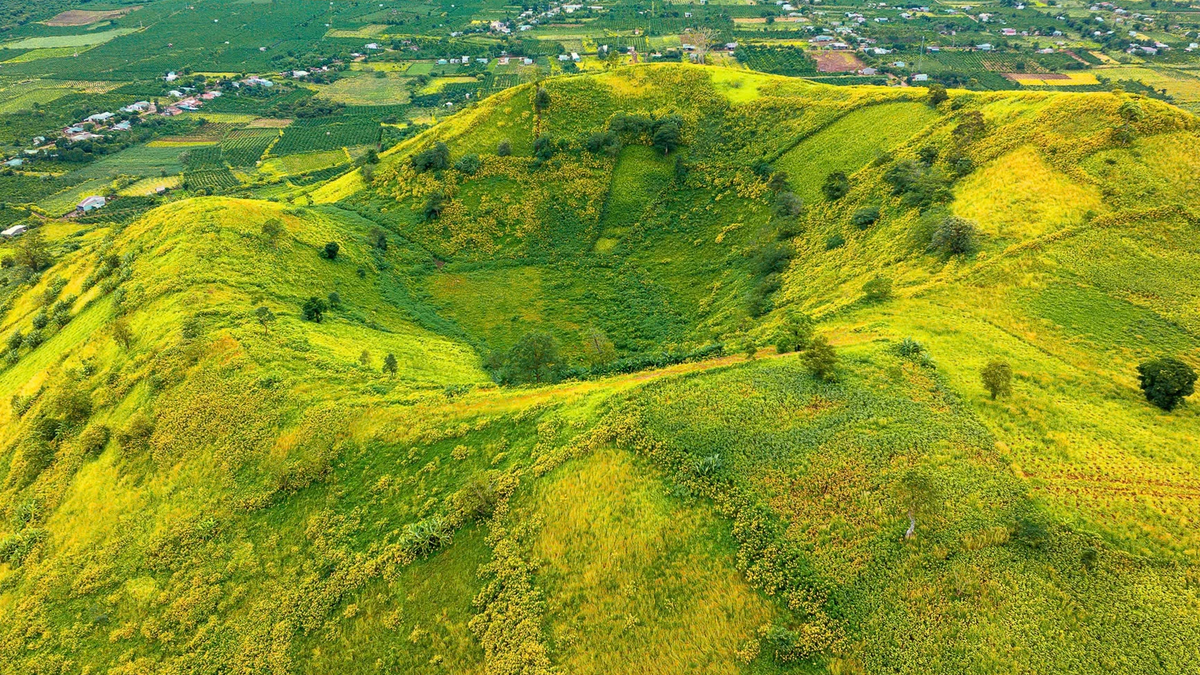









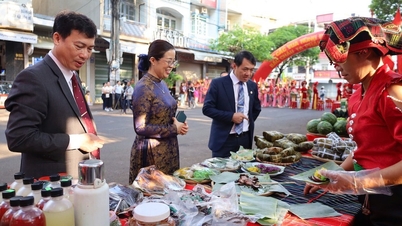
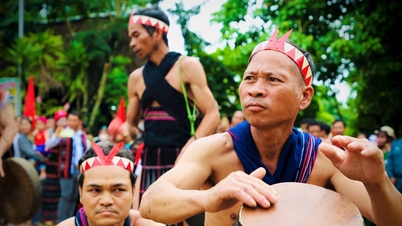


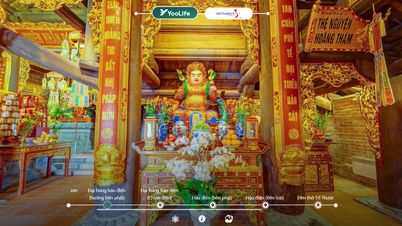


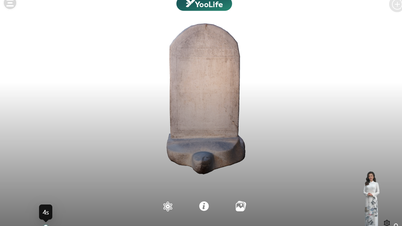






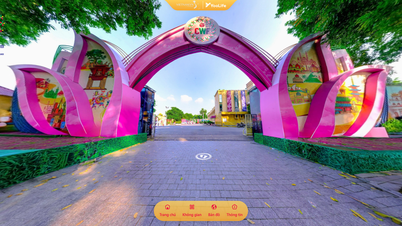





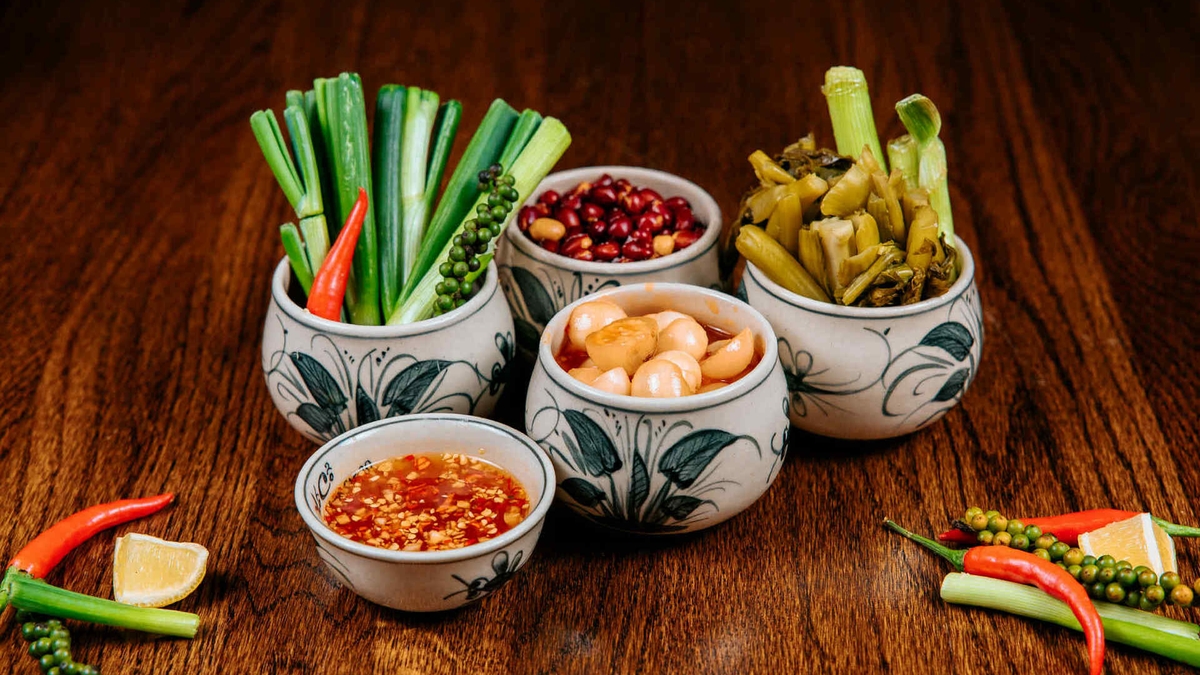

















































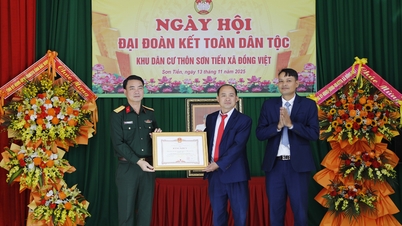










![Dong Nai OCOP transition: [Article 3] Linking tourism with OCOP product consumption](https://vphoto.vietnam.vn/thumb/402x226/vietnam/resource/IMAGE/2025/11/10/1762739199309_1324-2740-7_n-162543_981.jpeg)







Comment (0)